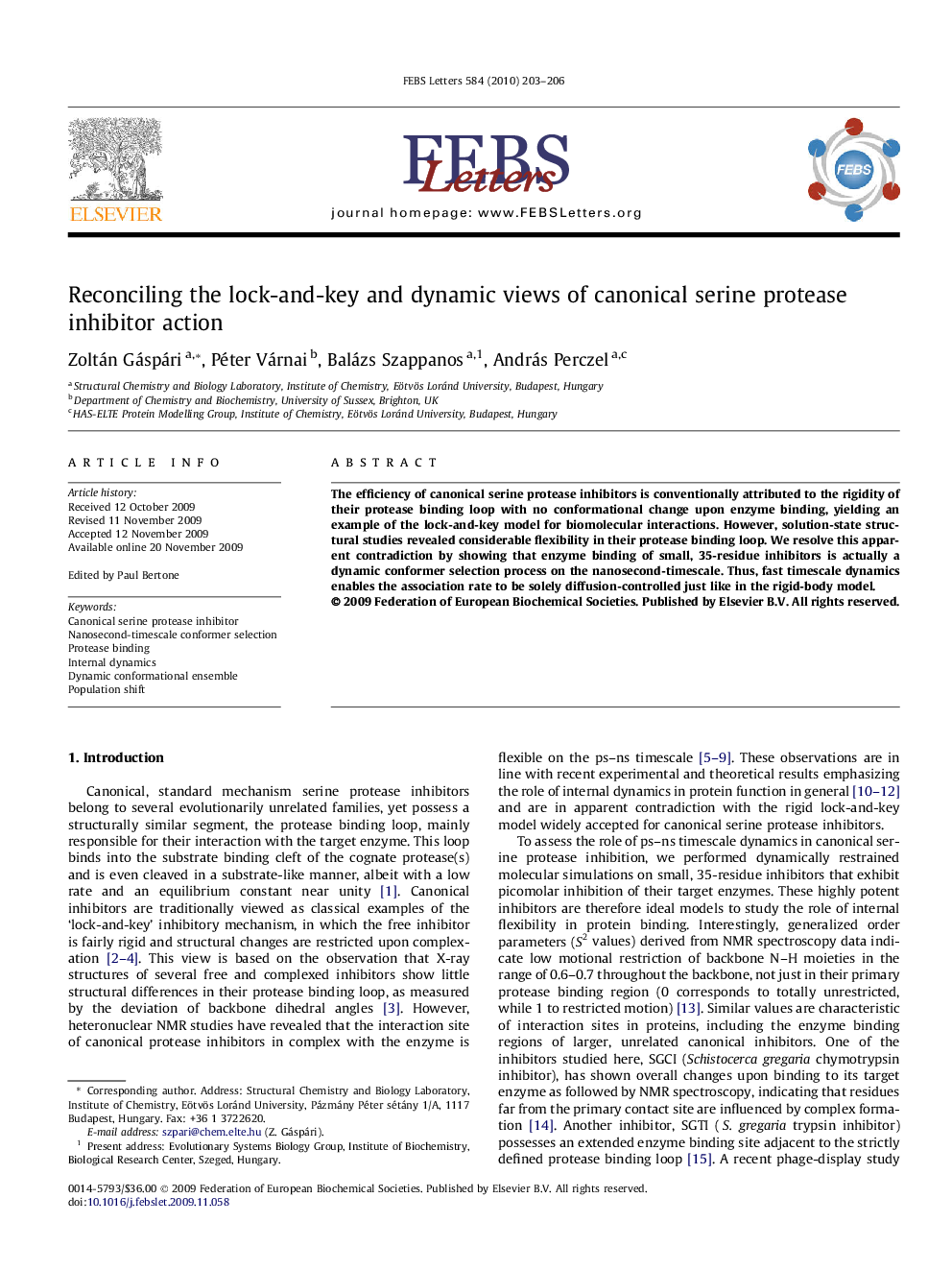| Article ID | Journal | Published Year | Pages | File Type |
|---|---|---|---|---|
| 2048876 | FEBS Letters | 2010 | 4 Pages |
Abstract
The efficiency of canonical serine protease inhibitors is conventionally attributed to the rigidity of their protease binding loop with no conformational change upon enzyme binding, yielding an example of the lock-and-key model for biomolecular interactions. However, solution-state structural studies revealed considerable flexibility in their protease binding loop. We resolve this apparent contradiction by showing that enzyme binding of small, 35-residue inhibitors is actually a dynamic conformer selection process on the nanosecond-timescale. Thus, fast timescale dynamics enables the association rate to be solely diffusion-controlled just like in the rigid-body model.
Keywords
Related Topics
Life Sciences
Agricultural and Biological Sciences
Plant Science
Authors
Zoltán Gáspári, Péter Várnai, Balázs Szappanos, András Perczel,
